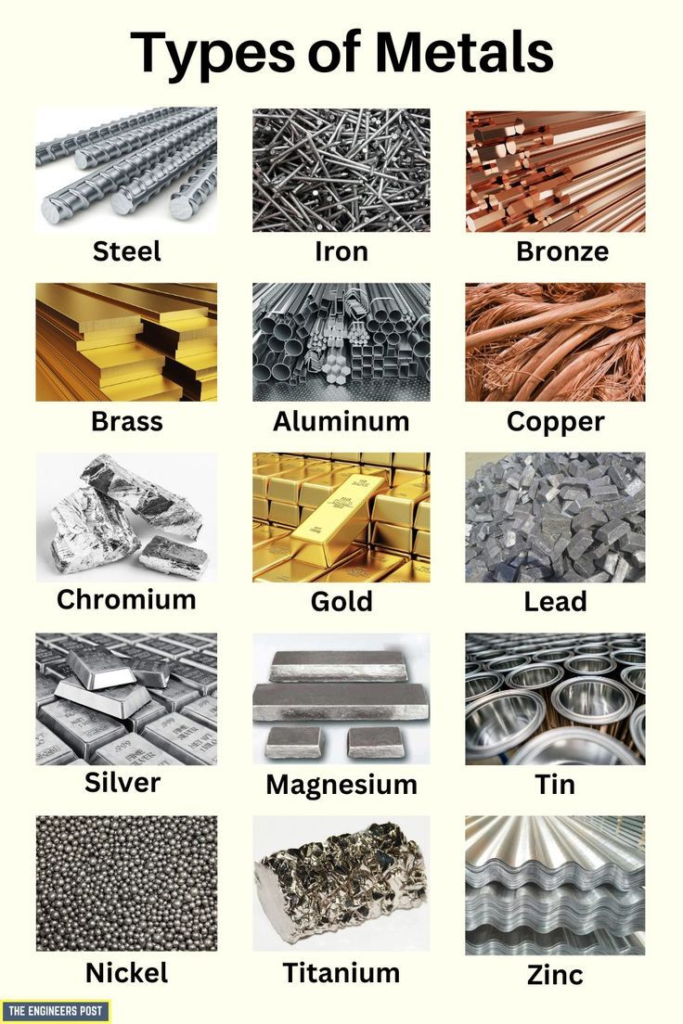Uses Of Metals And Nonmetals
uses of metal and non metals by Delta publications
Key Notes :
Uses of Metals:
Iron:
- Used to make steel, which is used in construction, bridges, and buildings.
- In automobiles, machinery, and tools.
Aluminum:
- Light, corrosion-resistant metal used in aircraft, packaging (like cans), and kitchen utensils.
Copper:
- Good conductor of electricity and used in electrical wires, circuits, and motors.
- Used in plumbing, roofing, and making coins.
Gold:
- Used in jewelry, coins, and electronic devices due to its corrosion resistance and excellent conductivity.
Silver:
- Used in jewelry, silverware, and in making electrical contacts due to its high conductivity.
Zinc:
- Used to make alloys like brass (with copper) and is used for galvanizing iron and steel to prevent rusting.
Magnesium:
- Used in making lightweight alloys for airplanes, missiles, and fireworks.
Lead:
- Used in batteries (like car batteries), shielding from radiation, and in construction materials.
Titanium:
- Known for its strength and resistance to corrosion, used in aircraft, medical implants, and jewelry.

Uses of Non metals:
Oxygen:
- Essential for respiration in living organisms.
- Used in welding and cutting metals.
Nitrogen:
- Used to make fertilizers (ammonia), and in preserving food (stored in a nitrogen environment).
- In making explosives and fertilizers.
Carbon:
- Used in the form of graphite in pencils, and as a fuel (coal).
- Diamond, a form of carbon, is used in jewelry and cutting tools due to its hardness.
Hydrogen:
- Used in the production of ammonia for fertilizers, as a fuel in rockets, and in hydrogen fuel cells.
Chlorine:
- Used in disinfectants (like bleach), in making plastics (PVC), and in water purification.
Sulfur:
- Used in making sulfuric acid, which is essential for fertilizers and in industrial processes.
Helium:
- Used in filling balloons and airships, and as a coolant in cryogenics and nuclear reactors.
Phosphorus:
- Used in making fertilizers, in the production of matches, and in fireworks.
Key Differences in Use:
- Metals are generally used for their strength, durability, and ability to conduct electricity and heat, while nonmetals are used for their chemical properties like reactivity, as well as their insulating properties.
Let’s practice!

